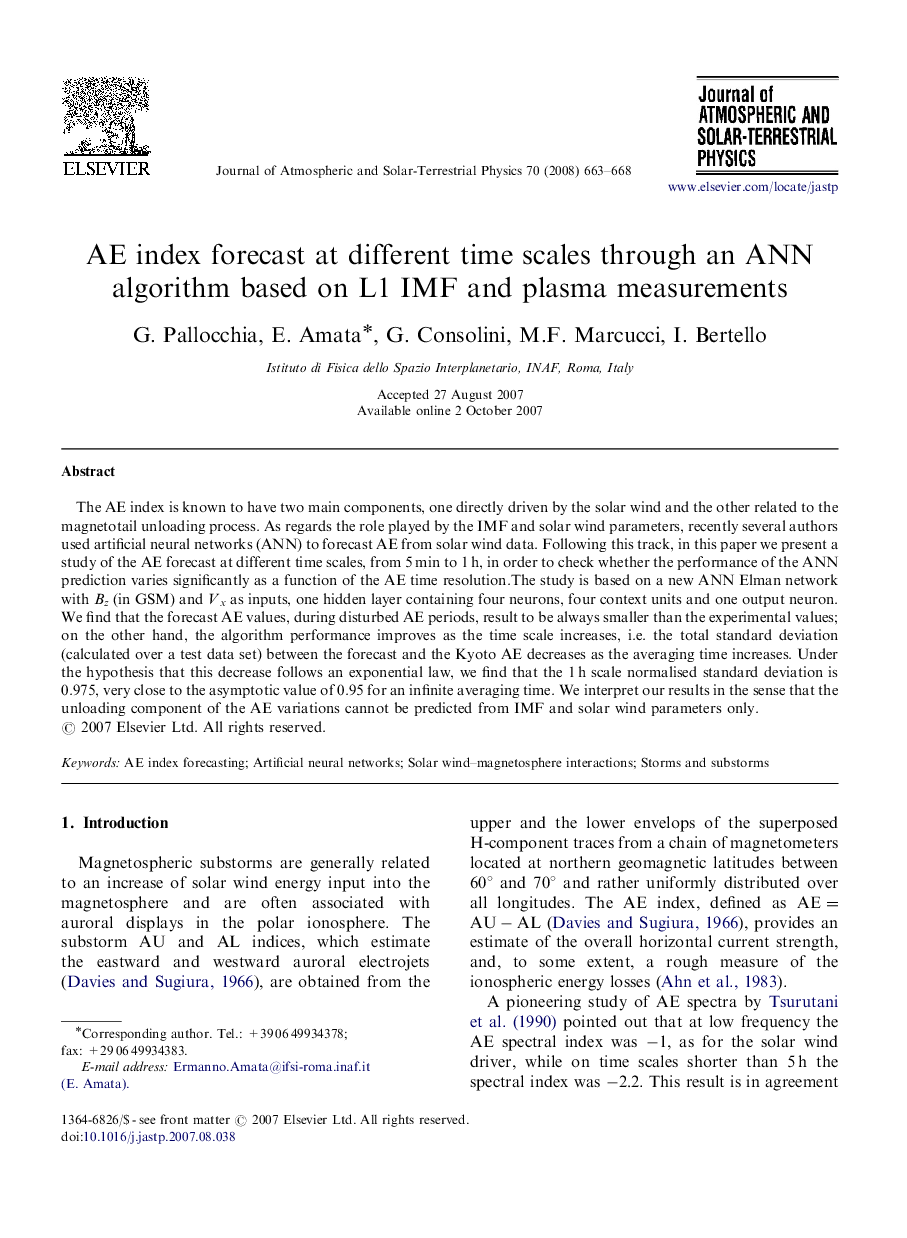| Article ID | Journal | Published Year | Pages | File Type |
|---|---|---|---|---|
| 1778197 | Journal of Atmospheric and Solar-Terrestrial Physics | 2008 | 6 Pages |
The AE index is known to have two main components, one directly driven by the solar wind and the other related to the magnetotail unloading process. As regards the role played by the IMF and solar wind parameters, recently several authors used artificial neural networks (ANN) to forecast AE from solar wind data. Following this track, in this paper we present a study of the AE forecast at different time scales, from 5 min to 1 h, in order to check whether the performance of the ANN prediction varies significantly as a function of the AE time resolution.The study is based on a new ANN Elman network with BzBz (in GSM) and VxVx as inputs, one hidden layer containing four neurons, four context units and one output neuron. We find that the forecast AE values, during disturbed AE periods, result to be always smaller than the experimental values; on the other hand, the algorithm performance improves as the time scale increases, i.e. the total standard deviation (calculated over a test data set) between the forecast and the Kyoto AE decreases as the averaging time increases. Under the hypothesis that this decrease follows an exponential law, we find that the 1 h scale normalised standard deviation is 0.975, very close to the asymptotic value of 0.95 for an infinite averaging time. We interpret our results in the sense that the unloading component of the AE variations cannot be predicted from IMF and solar wind parameters only.
